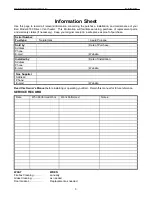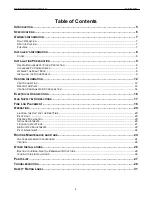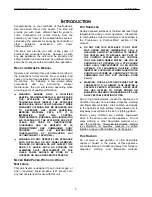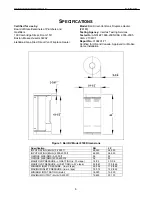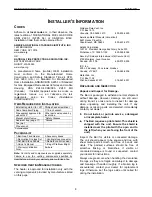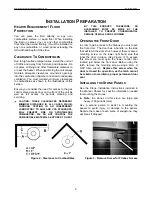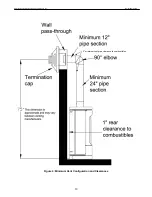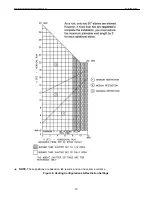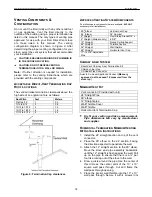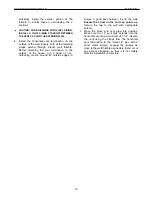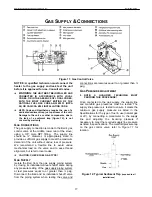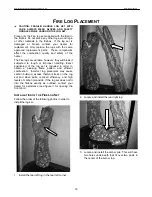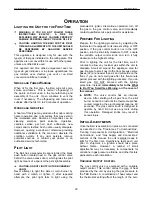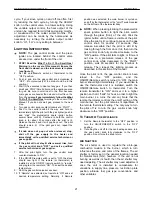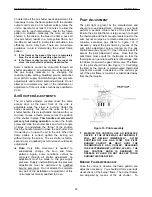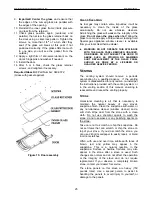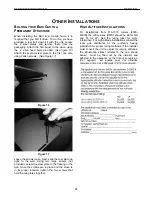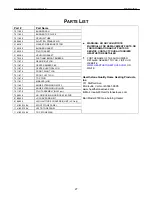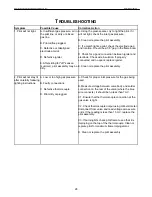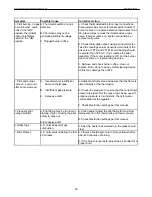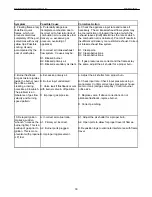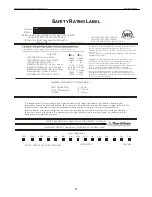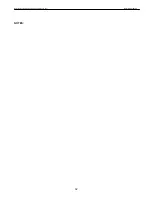
Hearthstone Quality Home Heating Products, Inc.
Bari Model #8180
G
AS
S
UPPLY
&
C
ONNECTIONS
Figure 11: Gas Control Valve
NOTICE: A qualified technician must connect the
heater to the gas supply and leak test the unit
before it is approved for use. Consult all codes.
WARNING:
THE UNIT MUST BE INSTALLED AND
CONNECTED IN ACCORDANCE WITH LOCAL
CODES, OR IN THE ABSENCE OF LOCAL CODES,
WITH THE MOST CURRENT EDITION OF THE
NATIONAL FUEL GAS CODE ANSI Z223.1 (NFPA
54) OR CAN/CGA B149 INSTALLATION CODE.
NFPA Code and Hearthstone require the use of a
dedicated sediment trap just upstream of the unit.
Damage to the valve or other components, due to
the lack of a sediment trap (figure 12), is not
covered by warranty.
G
AS
C
ONNECTIONS
The gas supply connection is made to the Bari’s gas
control valve at the middle, lower rear of the stove,
using a 3/8” male NPT fitting. The supply line
should be ½” diameter, or appropriately sized to
provide a sufficient gas supply to meet the maximum
demand of the unit without undue loss of pressure.
We recommend a flexible line to avoid undue
mechanical load on the valve and to ease thread
alignment, but refer to local codes.
CAUTION: CHECK FUEL GAS TYPE!
G
AS
S
UPPLY
Isolate the Bari from the gas supply piping system
by closing its individual manual shutoff valve during
any pressure testing of the gas supply piping system
at test pressures equal to or greater than ½ psig.
Disconnect the Bari and its individual shut-off valve
from the piping system when testing the valve and
connections at pressures equal to, or greater than ½
psig.
G
AS
P
RESSURE
A
DJUSTMENT
NOTE: A QUALIFIED TECHNICIAN MUST
PERFORM THIS PROCEDURE!
Once connected to the gas supply, the supply line
and manifold gas pressures must be tested. The
supply line pressure is tested to ensure it meets the
minimum gas supply pressure as listed in the
Specifications for the type of fuel in use (natural gas
or LP), by connecting a manometer to the supply
line and adjusting the incoming pressure if
necessary to meet the required supply line pressure
as listed in specifications. The manifold pressure tap
on the gas control valve, refer to
Figure 11
for
location.
Figure 12: Typical Sediment Trap
(required in all
installations)
17

